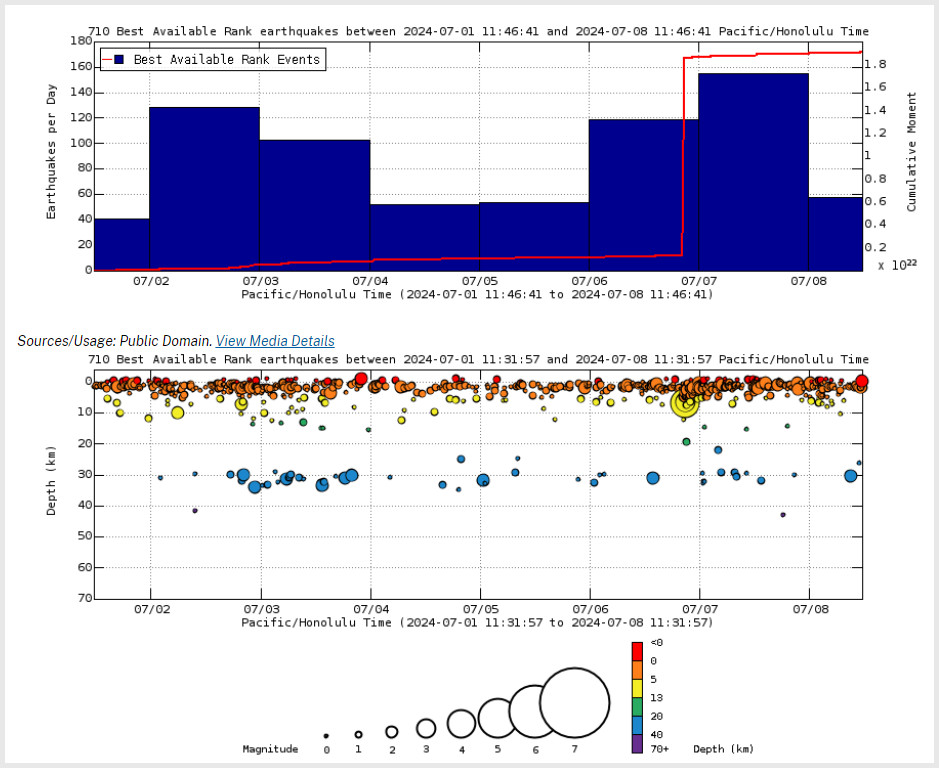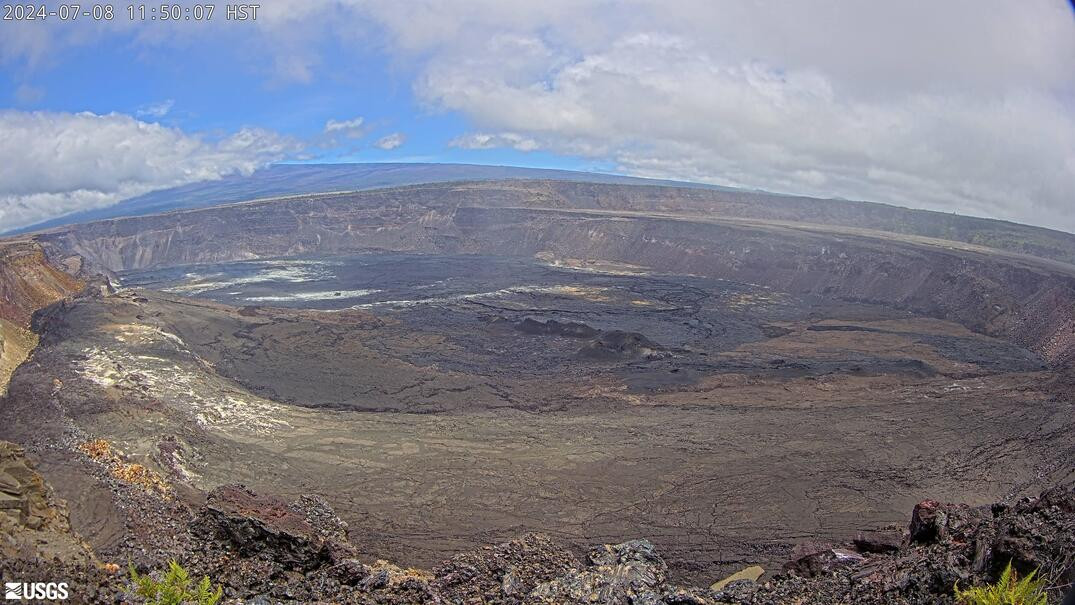(BIVN) – Kīlauea is not erupting, and the USGS Volcano Alert Level remains at ADVISORY.
Over the weekend, there was an uptick in the number of earthquakes measured on the upper East Rift Zone. However, as of Monday, earthquake counts have decreased slightly. Seismicity remains above background levels.
“Longer-term, gradual inflation of the summit and upper rift zones persists since the end of the June 3, 2024, eruption,” the USGS Hawaiian Volcano Observatory wrote on Monday morning. “Any substantial increases in seismicity and/or deformation could result in a new eruptive episode, but there are no signs of an imminent eruption at this time.”
From the USGS HVO update on July 8th:
Summit and Upper Rift Zone Observations: Over the past 24 hours, there were approximately 20 earthquakes detected beneath Kaluapele (Kīlauea caldera) and 50 earthquakes detected beneath the upper East Rift Zone, mostly at depths of 1–3 km (0.6–1.8 mi) beneath the ground surface. The number of upper East Rift Zone events decreased compared to yesterday (which had 95 events) but remains elevated above background for this area. Tiltmeters in Kīlauea summit region show a slight decrease in inflationary ground deformation rates over the past day: the SDH instrument southwest of the summit recorded approximately 2 microradians of inflationary tilt and the UWE instrument northwest of the summit qualitatively shows minor inflationary tilt (less than a microradian, see the monitoring notice below). GPS instruments around the summit region continue to show longer-term, gradual inflation since the end of the June 3, 2024, eruption. The most recent measurement of the summit’s SO2 emission rate was approximately 75 tonnes per day on June 28, 2024.

Above Top: Number of earthquakes per day during the past week (blue bars). The red line is the cumulative moment (energy) release. Bottom: Depth of earthquakes during the past week in the area shown on the map above. Depth is reported relative to sea level, which is equal to a depth of zero on the above plot. On both figures, circle-size represents magnitude, and color indicates depth. (USGS graphs)
Middle and Lower Rift Zone Observations: Rates of seismicity and ground deformation beneath the middle and lower East Rift Zone and lower Southwest Rift Zone remain low. Recent eruptive activity and ongoing unrest have been restricted to the summit and upper rift zone regions. Measurements from continuous gas monitoring stations downwind of Puʻuʻōʻō in the middle East Rift Zone—the site of 1983–2018 eruptive activity—remain below detection limits for SO2, indicating that SO2 emissions from Puʻuʻōʻō are negligible.
Analysis: Following the eruption on June 3, 2024, magma has been repressurizing the storage system beneath Halemaʻumaʻu and the south caldera region, activating earthquakes in the caldera south of Halemaʻumaʻu and in the upper East Rift Zone. At this time, it is not possible to say whether this activity will lead to an intrusion or eruption in the near future, or simply continue as seismic unrest at depth. Changes in the character and location of unrest can occur quickly, as can the potential for eruption, but there are no signs of an imminent eruption at this time.


by Big Island Video News1:51 pm
on at
STORY SUMMARY
HAWAIʻI VOLCANOES NATIONAL PARK - Earthquake counts in the upper East Rift Zone decreased slightly over the past 24 hours, scientists say, but counts remain above background.